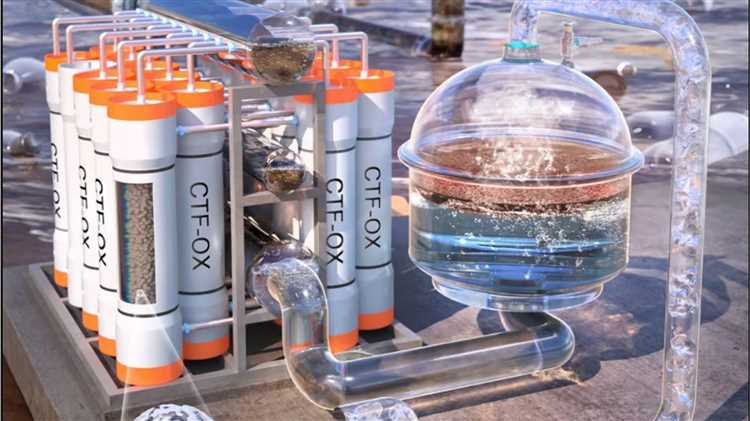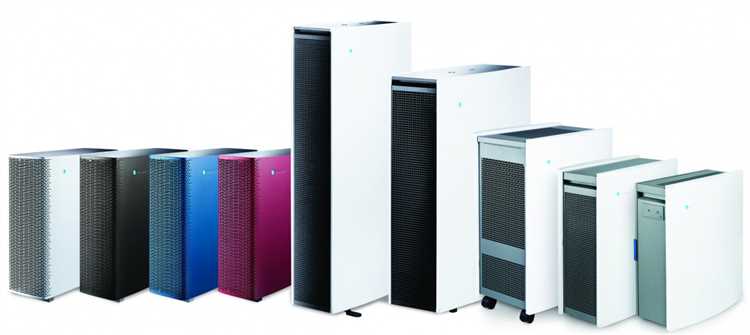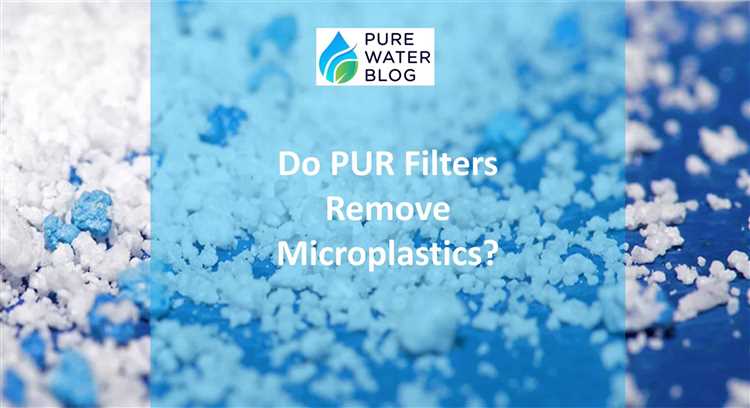
In recent years, there has been growing concern about the presence of microplastics in our environment and their potential health effects. Microplastics are tiny pieces of plastic, less than 5mm in size, that come from a variety of sources such as the decay of larger plastic items, synthetic fibers in clothing, and microbeads in personal care products. These microplastics have been found in our air, water, and even in the food we eat.
One of the emerging technologies that have gained attention in the fight against microplastics is air purifiers. While air purifiers have long been used to remove particles such as dust, pollen, and bacteria from the air, researchers have started to investigate their effectiveness in trapping and removing microplastics as well.
Several studies have shown promising results, suggesting that air purifiers can indeed help remove microplastics from indoor air. These studies have found that air purifiers equipped with high-efficiency particulate air (HEPA) filters are particularly effective in capturing microplastics. HEPA filters are designed to remove particles as small as 0.3 microns, which includes many types of microplastics.
However, it is important to note that while air purifiers can help reduce the levels of microplastics in the air, they are not a complete solution to the problem. Microplastics can still enter our environment through various other pathways, such as water runoff and the breakdown of larger plastic items. Therefore, it is essential to address the issue of microplastics at its source, by reducing the use of single-use plastics and promoting recycling and proper waste management.
In conclusion, air purifiers equipped with HEPA filters can play a role in reducing the levels of microplastics in indoor air. However, they are not a magic solution to the problem, and more comprehensive actions are needed to tackle the issue of microplastics in our environment. By raising awareness, implementing stricter regulations, and promoting sustainable practices, we can work towards a cleaner and healthier future free from the harmful effects of microplastics.
- The Impact of Microplastics on Air Quality
- Understanding Air Purifiers and Their Function
- How do air purifiers work?
- Can air purifiers remove microplastics?
- The Science Behind Microplastic Filtration
- Key Features to Look for in an Air Purifier for Microplastic Removal
- Benefits of Using Air Purifiers to Remove Microplastics
- 1. Improved Indoor Air Quality
- 2. Protects Your Health
- 3. Environmental Protection
- 4. Peace of Mind
- Question-Answer:
- How do air purifiers remove microplastics?
- Are air purifiers effective in removing microplastics?
- Can air purifiers remove all types of microplastics?
- Can air purifiers remove microplastics from all areas of a room?
- Are there any potential health risks associated with microplastics in the air?
- What are microplastics?
The Impact of Microplastics on Air Quality
As the prevalence of plastic pollution continues to increase, it is important to consider the impact of microplastics on air quality. Microplastics are small fragments of plastic, measuring less than 5mm in size, that have been broken down from larger plastic items such as bottles, bags, and packaging materials. These tiny particles can easily become airborne and enter the atmosphere.
Once in the air, microplastics can travel long distances and are often carried by wind currents. They can be found in both indoor and outdoor environments, exposing humans and animals to their potential harmful effects. Inhaling microplastics can pose serious risks to respiratory health, as these particles can lodge in the lungs and cause inflammation. Additionally, they can also enter the bloodstream and have the potential to reach other organs, potentially leading to systemic health issues.
The presence of microplastics in the air is a growing concern due to their ability to absorb and transport other pollutants. These particles have a high surface area to volume ratio, which allows them to attract and accumulate other toxic substances such as heavy metals and chemicals. This means that microplastics can act as a carrier for hazardous pollutants, making the air quality even more compromised.
Air purifiers play a crucial role in mitigating the impact of microplastics on air quality. By removing these tiny particles from the air, purifiers can help reduce the risk of respiratory issues and limit the potential for toxic pollutants to enter the body. However, it is important to note that not all air purifiers are designed to filter out microplastics. It is necessary to invest in a purifier with a high-efficiency particulate air (HEPA) filter, as these filters are specifically designed to capture particles as small as 0.3 microns, including microplastics.
In conclusion, the presence of microplastics in the air can have detrimental effects on air quality and human health. It is crucial to raise awareness about the potential risks associated with microplastic pollution and take steps to minimize their presence in the environment. Investing in an air purifier with a HEPA filter can be an effective strategy in improving indoor air quality and reducing exposure to harmful microplastics and associated pollutants.
Understanding Air Purifiers and Their Function
Air purifiers are devices that work to remove contaminants from the air in a room or space. They are commonly used in homes and offices to improve indoor air quality and create a healthier environment. Air purifiers come in different sizes and models, but they all have the same basic function.
How do air purifiers work?
Air purifiers work by using various mechanisms to trap and remove pollutants from the air. The most common method used by air purifiers is filtration. A filter, often made of a fine mesh material, captures airborne particles as air passes through it. This includes dust, pollen, pet dander, and other allergens.
Some air purifiers also use activated carbon filters to absorb gases, chemicals, and odors. The activated carbon has a porous structure that attracts and traps these particles, preventing them from circulating in the air. This can be particularly useful in homes with smokers or in areas with strong odors.
Can air purifiers remove microplastics?
While air purifiers are effective at removing many types of particles from the air, they may not be able to capture microplastics. Microplastics are tiny pieces of plastic that can be as small as 5 millimeters in size. They can come from a variety of sources, including microbeads in personal care products and fibers from synthetic clothing.
Because of their small size, microplastics can be difficult to capture with standard air purifier filters. However, some specialized models may be designed to target microplastics specifically. These models often use a combination of filtration and electrostatic technology to capture and remove these tiny particles from the air.
It is important to note that more research is needed to fully understand the effectiveness of air purifiers in removing microplastics. However, investing in a high-quality air purifier with a HEPA filter is still a good step towards improving indoor air quality and reducing exposure to other pollutants.
In conclusion, air purifiers play a vital role in improving indoor air quality and creating a healthier environment. While they may not be able to capture microplastics effectively, they are still effective at removing a wide range of other airborne particles and pollutants.
The Science Behind Microplastic Filtration
Microplastics are tiny particles of plastic that are less than 5 millimeters in size. They come from a variety of sources, including microbeads in personal care products, as well as the breakdown of larger plastic items. These particles are small enough to be easily inhaled and ingested, posing potential risks to both human health and the environment.
Air purifiers are increasingly being used to remove microplastics from the air. These devices use a combination of physical and chemical processes to filter out these tiny particles.
One of the main mechanisms used in air purifiers to remove microplastics is filtration. This involves passing the air through a filter made of a material with small pores that can trap the microplastic particles. The size of the pores in the filter determines the size of particles that can be captured. Most air purifiers use HEPA (High-Efficiency Particulate Air) filters, which are capable of capturing particles as small as 0.3 microns in size.
In addition to filtration, some air purifiers also use electrostatic attraction to remove microplastics. These devices have an ionizer that emits negatively charged ions into the air. The ions attach themselves to the microplastic particles, causing them to become positively charged. The charged particles are then attracted to a positively charged plate in the purifier, effectively removing them from the air.
Chemical processes are also utilized in air purifiers to remove microplastics. Some devices have activated carbon filters that can adsorb organic compounds, including microplastic particles. The activated carbon works by attracting and trapping the particles on its surface.
It is important to note that while air purifiers can help remove microplastics from the air, they are not a complete solution to the problem. Microplastics can still be present in other areas, such as water sources and food. Additionally, the effectiveness of air purifiers in removing microplastics can vary depending on factors such as the size and concentration of the particles, as well as the airflow and filtration capacity of the device.
In conclusion, air purifiers play a role in the removal of microplastics from the air by using a combination of physical and chemical processes. Filtration, electrostatic attraction, and chemical adsorption are all methods used to capture these tiny particles. However, it is important to remember that air purifiers are not a complete solution and that additional measures are needed to address the issue of microplastic pollution.
Key Features to Look for in an Air Purifier for Microplastic Removal
When it comes to choosing an air purifier specifically for the removal of microplastics, there are a few key features that you should look for. These features will ensure that the air purifier is effective in capturing and removing microplastic particles from your indoor air. Here are some important features to consider:
| Feature | Description |
|---|---|
| High-Efficiency Particulate Air (HEPA) Filter | A HEPA filter is essential for trapping tiny particles like microplastics. Look for an air purifier that has a certified HEPA filter, which can capture particles as small as 0.3 microns with an efficiency of 99.97%. |
| Activated Carbon Filter | In addition to a HEPA filter, an activated carbon filter is also beneficial for microplastic removal. This type of filter can effectively absorb odors and volatile organic compounds (VOCs) that may be released by microplastics. |
| Multiple Filtration Stages | An air purifier with multiple filtration stages will provide better overall air purification. Look for models that have pre-filters, HEPA filters, activated carbon filters, and any other specialized filters that can target microplastics. |
| High Clean Air Delivery Rate (CADR) | The CADR measures how quickly an air purifier can clean the air in a given space. Look for a high CADR rating for both particles and smoke, as this indicates a more effective removal of microplastics. |
| Quiet Operation | If you plan to use the air purifier in your bedroom or living room, it’s important to choose a model that operates quietly. Look for air purifiers that have noise levels below 50 decibels. |
| Energy Efficiency | Consider the energy efficiency of the air purifier, as it will be running continuously to remove microplastics. Look for models that are Energy Star certified, as they are designed to consume less energy while still providing effective air purification. |
| Size and Coverage Area | Choose an air purifier that is suitable for the size of the room where you plan to use it. Check the coverage area specifications to ensure that the air purifier can effectively clean the entire space. |
By considering these key features, you can find an air purifier that is specifically designed to remove microplastics from your indoor air. Remember to check product specifications and read customer reviews to ensure that the air purifier meets your specific needs and expectations.
Benefits of Using Air Purifiers to Remove Microplastics
Air purifiers are not only effective in removing common airborne pollutants like dust, pollen, and pet dander, but they can also help in eliminating microplastics from the air. This is especially important as microplastics have become a major environmental concern due to their presence in our water bodies, food chain, and even the air we breathe.
Here are some benefits of using air purifiers to remove microplastics:
1. Improved Indoor Air Quality

Using an air purifier that is specifically designed to capture microplastics can significantly improve the indoor air quality in your home or office. These purifiers have advanced filtration systems that can effectively trap even the tiniest particles, ensuring that you are breathing cleaner and healthier air.
2. Protects Your Health
Inhaling microplastics can have adverse health effects, such as respiratory issues, inflammation, and even potential damage to organs. By using an air purifier, you can reduce your exposure to microplastics and lower the risk of developing these health problems.
3. Environmental Protection

Using air purifiers to remove microplastics not only benefits your health but also contributes to the protection of the environment. By preventing microplastics from entering the air, you are reducing their potential impact on ecosystems, wildlife, and marine life.
4. Peace of Mind

Knowing that you have an air purifier that can effectively remove microplastics from the air can give you peace of mind. You can enjoy a cleaner and safer indoor environment, free from harmful airborne particles, including microplastics.
In conclusion, using air purifiers to remove microplastics offers numerous benefits, including improved indoor air quality, protection of your health, environmental preservation, and peace of mind. Investing in a high-quality air purifier with advanced filtration systems can be a valuable step towards creating a healthier and safer living environment.
Question-Answer:
How do air purifiers remove microplastics?
Air purifiers use various methods to remove microplastics from the air. Some models use filters with a high filtration efficiency to capture small particles, including microplastics. Others use electrostatic precipitation or ionization to attract and remove microplastics. It is important to choose an air purifier that is specifically designed to remove microplastics if that is a concern for you.
Are air purifiers effective in removing microplastics?
Yes, air purifiers can be effective in removing microplastics from the air. However, their effectiveness may vary depending on the type and quality of the air purifier. It is important to choose an air purifier that is specifically designed to remove microplastics and has a high filtration efficiency. Regular maintenance and filter replacement are also important to ensure optimal performance.
Can air purifiers remove all types of microplastics?
Air purifiers can remove a wide range of microplastics, including fragments, fibers, and films. However, the effectiveness may vary depending on the size and characteristics of the microplastics. Some air purifiers are specifically designed to target certain types of microplastics, so it is important to choose the right one for your needs.
Can air purifiers remove microplastics from all areas of a room?
Air purifiers can effectively remove microplastics from the air in a room. However, their coverage area may vary depending on the size and power of the air purifier. It is recommended to choose an air purifier that is suitable for the size of the room and position it in a central location for maximum effectiveness in removing microplastics.
Are there any potential health risks associated with microplastics in the air?
Exposure to microplastics in the air has been a growing concern due to their potential health risks. Inhalation of microplastics can lead to respiratory issues, inflammation, and other health problems. Therefore, it is important to take measures to reduce the presence of microplastics in the air, such as using air purifiers that are specifically designed to remove them.
What are microplastics?
Microplastics are tiny particles of plastic that are less than 5mm in size. They can come from a variety of sources, including the breakdown of larger plastic items, microbeads in personal care products, and synthetic fibers from clothing.